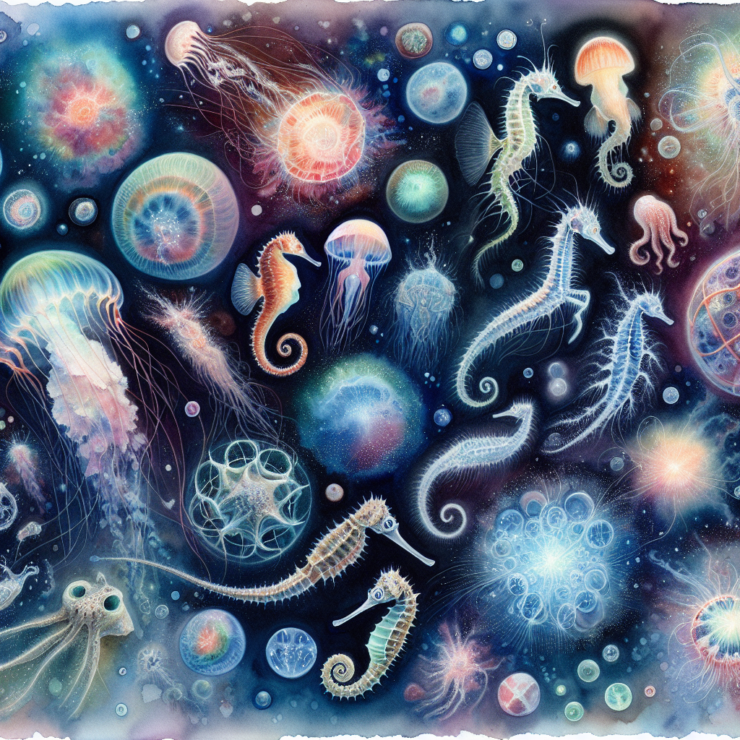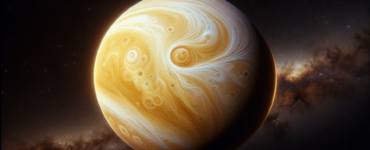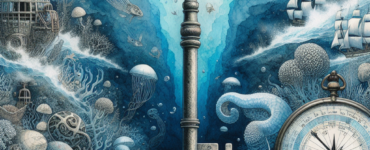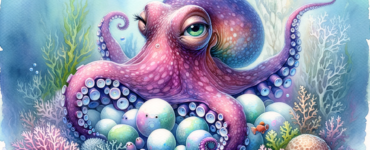Have you ever wondered why certain marine creatures can glow in the dark ocean depths? This phenomenon, known as biofluorescence, is not just a spectacle of nature’s beauty but also a subject of scientific intrigue. Biofluorescence occurs when organisms absorb light, transform it, and then emit it as a different color. This natural occurrence is not just limited to deep-sea creatures but can also be found in some species of sharks, coral reefs, and even tiny plankton.
Marine scientists have been exploring the purpose behind this mesmerizing light show. One theory suggests that biofluorescence may help creatures in communication, either to attract mates or to deter predators. Another possibility is that it aids in camouflage or serves as a way to lure prey close enough for an attack.
The discovery of biofluorescence in sharks was both surprising and enlightening for the scientific community. Researchers found that catsharks emit a green glow, which might help them identify each other in the dim ocean waters1 . This finding was significant because it challenged the previous assumption that deep-sea creatures were colorblind. The green glow likely appears bright against the deep blue of the ocean, allowing sharks to stand out to their own kind while remaining hidden from other predators or prey2.
Coral reefs, often referred to as the “rainforests of the sea,” exhibit biofluorescence in a spectrum of colors3. This is not merely for aesthetics; the glowing colors are thought to be a form of sunscreen for corals, protecting them from the sun’s harmful UV rays. Furthermore, the colorful glow attracts symbiotic algae, which live inside corals and are vital for their nutrition. This symbiotic relationship is essential for the health of coral reefs and the overall balance of marine ecosystems4.
The study of biofluorescence is paving the way for advancements in medical research as well. Scientists are exploring how biofluorescent proteins can be used in brain and cancer research, offering potential breakthroughs in understanding and treating these complex conditions5.
As research continues to uncover the secrets of biofluorescence, we are reminded of the intricate and interconnected nature of life on Earth. These radiant displays are not just visual wonders but carry deeper meanings for the survival and health of marine organisms. Let the glow of biofluorescence inspire us to delve deeper into understanding our planet’s mysteries, reminding us that even in the darkest depths, there is light and color to be found.
- https://www.nationalgeographic.com/animals/article/biofluorescent-catsharks-glow-underwater-with-tiny-lightsabers-metabolites [↩]
- https://www.nationalgeographic.com/animals/article/160425-biofluorescence-glowing-catsharks-shark-eye-camera [↩]
- https://www.themarinediaries.com/tmd-blog/coral-reefs-the-rainforests-of-the-se [↩]
- https://www.princeton.edu/news/2016/11/02/when-corals-met-algae-symbiotic-relationship-crucial-reef-survival-dates-triassic [↩]
- https://www.sciencedirect.com/science/article/abs/pii/S0753332218302920 [↩]





































Add comment